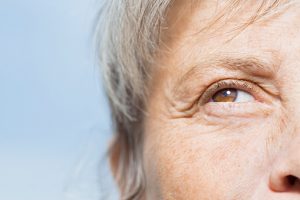 You know you’re getting old when you have to hold your phone at arm’s length to see who’s calling you. Or when you have to put a pair of reading glasses in every room of your house so that you don’t have to go searching for them every time you need to check cooking instructions on a food package. Having to constantly rely on a magnifying glass is annoying to say the least, not to mention that we tend to lose our glasses all the time—and, of course, at the least opportune moment.
You know you’re getting old when you have to hold your phone at arm’s length to see who’s calling you. Or when you have to put a pair of reading glasses in every room of your house so that you don’t have to go searching for them every time you need to check cooking instructions on a food package. Having to constantly rely on a magnifying glass is annoying to say the least, not to mention that we tend to lose our glasses all the time—and, of course, at the least opportune moment.
The proper medical term for this old-age condition (which is almost inevitable, unfortunately) is presbyopia. Starting as early as our mid-40s, the lenses of our aging eyes gradually lose their elasticity, hindering our ability to focus on nearby objects. At first, you notice some blurriness in your vision when you’re trying to read something in a room that is poorly lit, but eventually, even good lighting doesn’t help.
Advertisement
Prescription glasses are a simple solution to this problem, and practically everybody affected by presbyopia has at least one pair of glasses to help them read small text and see finer details. There are other alternatives as well, involving surgical vision correction. One of the latest developments in the area is the Raindrop, a new eye implant that corrects blurry vision associated with presbyopia. (Improving circulation helps strengthen eyes.)
The Raindrop is a gel-like device smaller than the eye of a needle. It takes about 10 minutes to implant, and unlike laser surgery, the treatment is reversible, meaning it can be taken out if needed. Resembling a tiny contact lens, the implant changes the shape of the cornea to change the way light passes through, and this improves blurry vision. It’s easily removable, so you can take the lens for a test drive to see whether this is for you.
In a study involving 373 participants all suffering from moderate presbyopia and free of other eye conditions, 92 percent maintained good near vision two years after the surgery. About seven percent experienced cloudy vision and had their implant removed. Side effects identified in the patients include infection, glare, corneal scarring, and dry eye. Based on the results of this study, the Raindrop has been approved by the Food and Drug Administration.
The procedure itself is very simple and painless. The doctor examines the eyes for diseases and checks the cornea to see whether it’s thick and healthy enough for the implant. Then the surgeon applies numbing drops to the eye before inserting the implant, so the most you feel is a little bit of pressure. Once the implant is in, you’ll see the difference in your vision in as little as a few minutes. To help heal the cornea, eye drops are prescribed for several months post-surgery.
Something to keep in mind before jumping on the bandwagon: This corneal implant doesn’t work for people with severe nearsightedness due to the high risk of complications involved. The device hasn’t been tested on people who had LASIK surgery for their nearsightedness. And, of course, if you start noticing changes in your vision, see your doctor to test for other conditions and try lifestyle adjustments to strengthen your eye health. As with any aspect of health, it’s always better to prevent a problem than to correct it.
Related: Blurred vision: Causes, symptoms, and treatment
